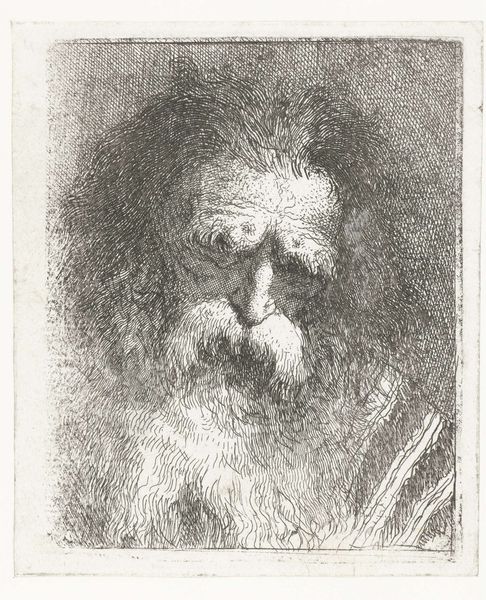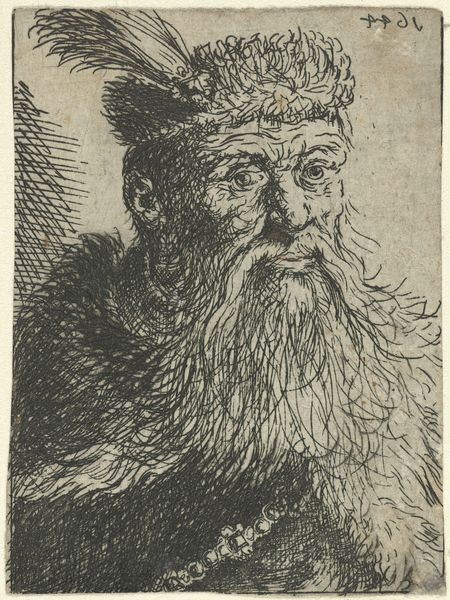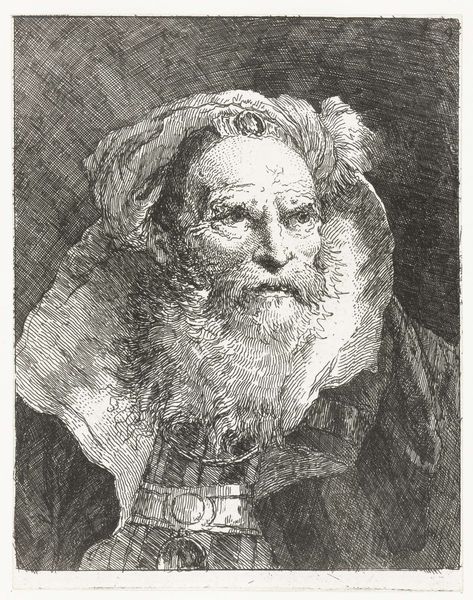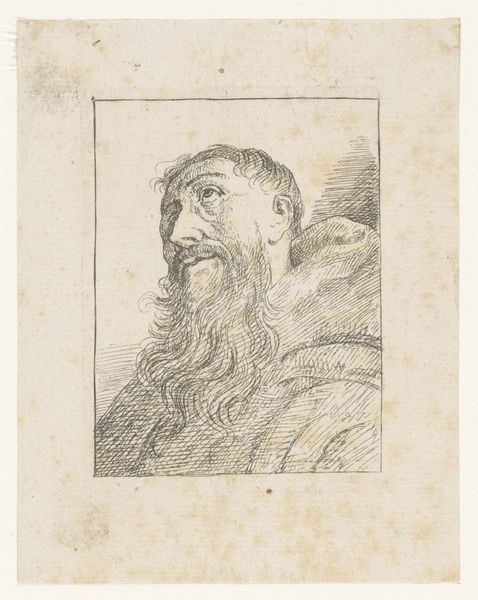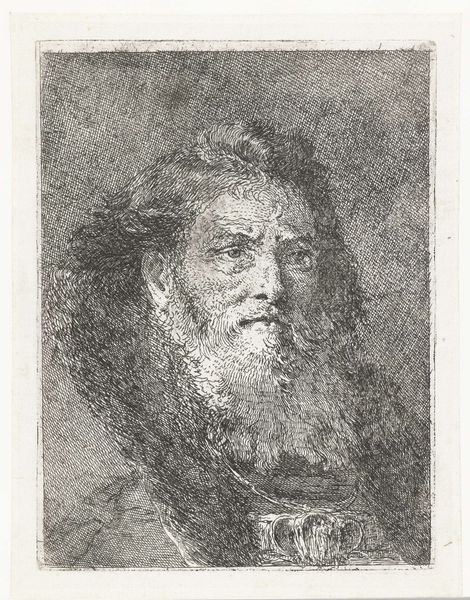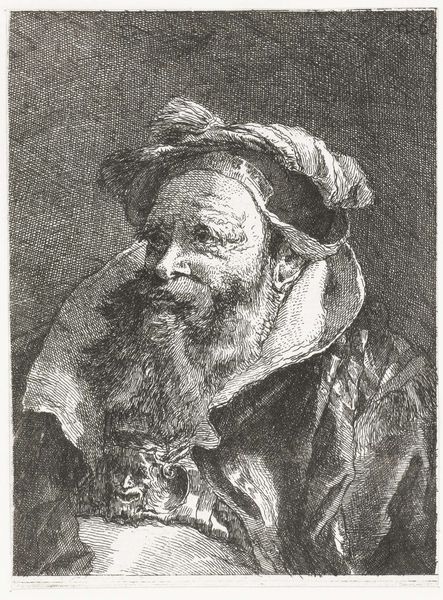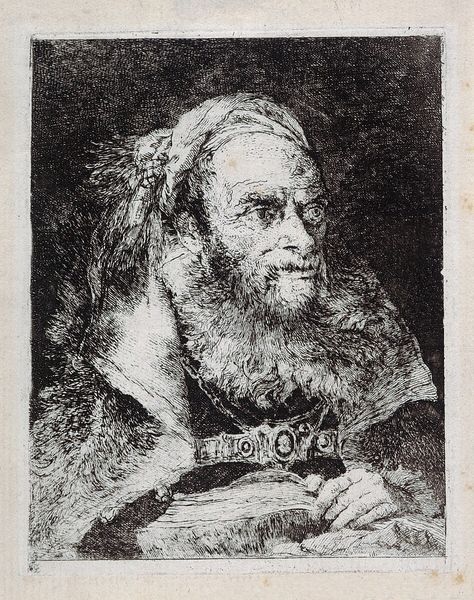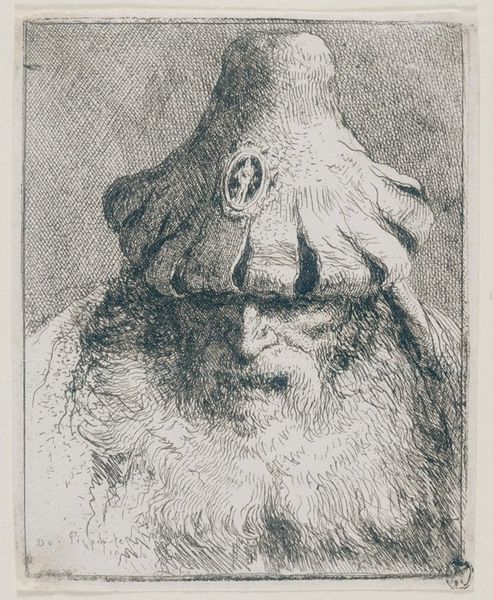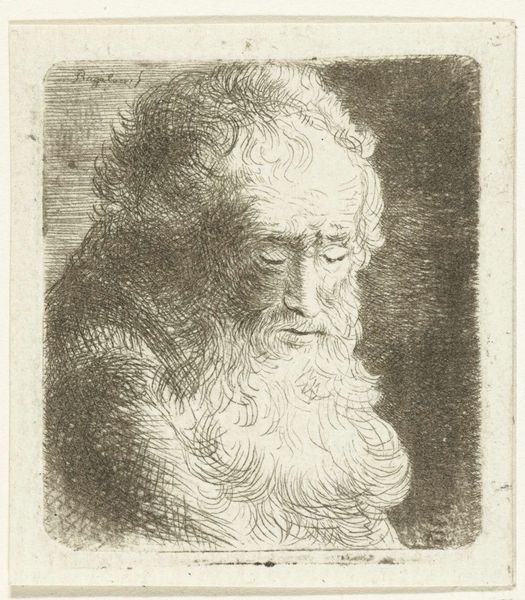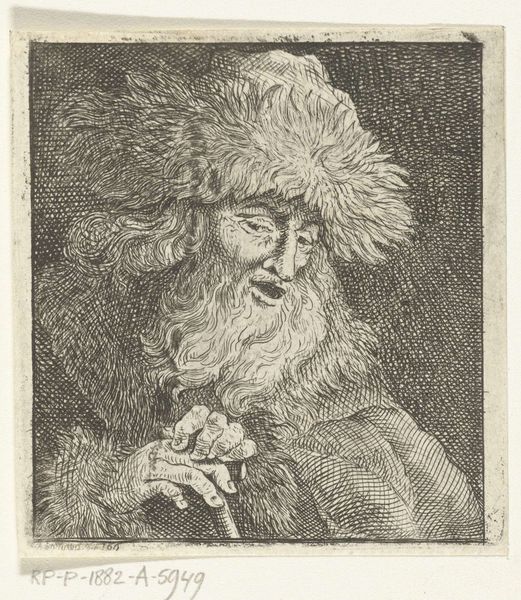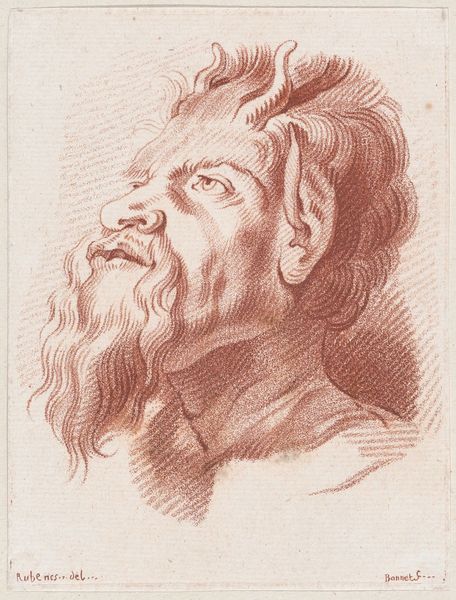
drawing, etching, engraving
#
portrait
#
drawing
#
baroque
#
etching
#
pencil drawing
#
engraving
Dimensions: height 68 mm, width 54 mm
Copyright: Rijks Museum: Open Domain
Curator: Let’s take a moment to appreciate Rembrandt van Rijn's etching, "Bust of an Old Man with a Beard," created sometime between 1616 and 1719. Editor: Immediately, I'm drawn to the intensity of the lines; there's a beautiful visual texture and strong contrast that adds drama to a rather humble composition. Curator: The material and process here are so vital. It’s an etching, so think about the physical labor, the copper plate, the acid, the inking and printing—the way Rembrandt multiplied his image and made it available. This brings art to a broader audience, challenging notions of scarcity and artistic aura. Editor: Absolutely. The cross-hatching and varied line weights not only define the form, but also evoke a sense of depth. The controlled chaos of the lines builds the image—the density around his eyes and beard create an incredible richness, which focuses the viewer on his thoughtful expression. It's all very Baroque. Curator: And what about the subject himself? Was this an actual model? Rembrandt often drew on those around him. Or is he conjuring a type, “the old man”? Who had the means and access to own the printed image? Was it for private enjoyment, study, or trade? How do those socioeconomic contexts change the way we receive the image now in this museum? Editor: All valid and essential questions regarding the socio-historical dimension, no doubt, but consider just the pure visuality: the lighting! The etching method allowed Rembrandt such subtle gradations of light, the chiaroscuro emphasizing the contours of his face. See how the light rakes across the high points of the man's forehead, nose and cheek bones. The play of light adds so much depth. Curator: Indeed. What was produced then, and what we see today through this lens, speaks volumes. Considering those initial audiences, the process and cost, illuminates the distribution network for his works during the period. The physical production methods inevitably play a role in the meaning, don't you think? Editor: I agree the circumstances affect our viewing and appreciation, naturally, but when considering the finished artwork, there's still an immense value and joy in simply witnessing how the forms cohere so effectively, as a balanced aesthetic experience. Curator: Fascinating! Looking closely, beyond subject and beauty, unveils a network of people, production methods and distribution processes. Editor: Yes, but sometimes all it takes is that intense gaze emerging from a constellation of etched lines for me to fall in love.
Comments
No comments
Be the first to comment and join the conversation on the ultimate creative platform.
